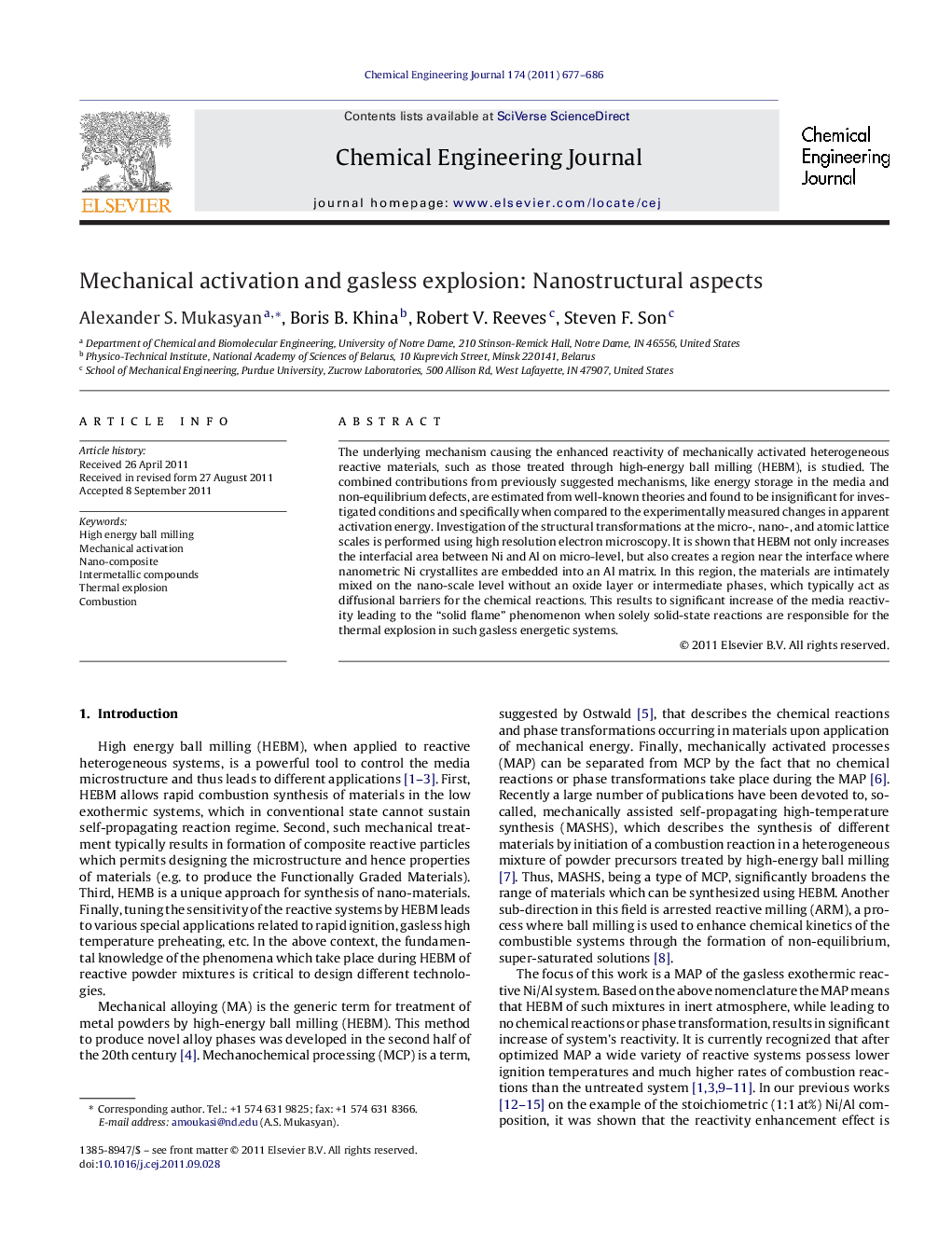| Article ID | Journal | Published Year | Pages | File Type |
|---|---|---|---|---|
| 151112 | Chemical Engineering Journal | 2011 | 10 Pages |
The underlying mechanism causing the enhanced reactivity of mechanically activated heterogeneous reactive materials, such as those treated through high-energy ball milling (HEBM), is studied. The combined contributions from previously suggested mechanisms, like energy storage in the media and non-equilibrium defects, are estimated from well-known theories and found to be insignificant for investigated conditions and specifically when compared to the experimentally measured changes in apparent activation energy. Investigation of the structural transformations at the micro-, nano-, and atomic lattice scales is performed using high resolution electron microscopy. It is shown that HEBM not only increases the interfacial area between Ni and Al on micro-level, but also creates a region near the interface where nanometric Ni crystallites are embedded into an Al matrix. In this region, the materials are intimately mixed on the nano-scale level without an oxide layer or intermediate phases, which typically act as diffusional barriers for the chemical reactions. This results to significant increase of the media reactivity leading to the “solid flame” phenomenon when solely solid-state reactions are responsible for the thermal explosion in such gasless energetic systems.
► Ni–Al gasless reactive heterogeneous system. ► Mechanism of enhanced reactivity by high energy ball milling. ► Micro-, nano-, and atomic lattice scales studies. ► Nano-scale mixing without formation of an oxide layer or intermediate phases. ► Solid flame: solely solid-state reactions are responsible for the thermal explosion.
